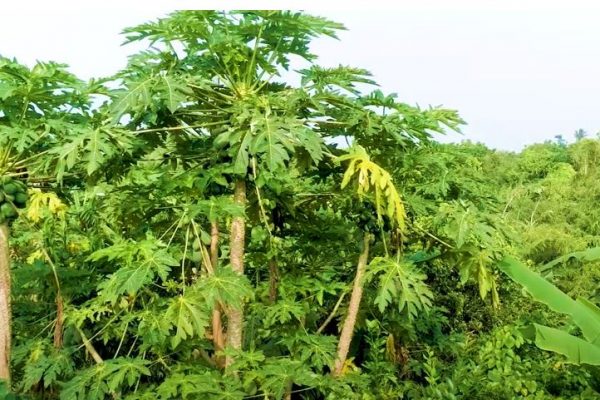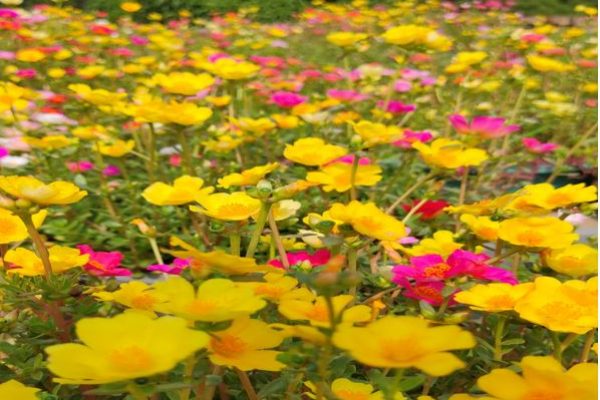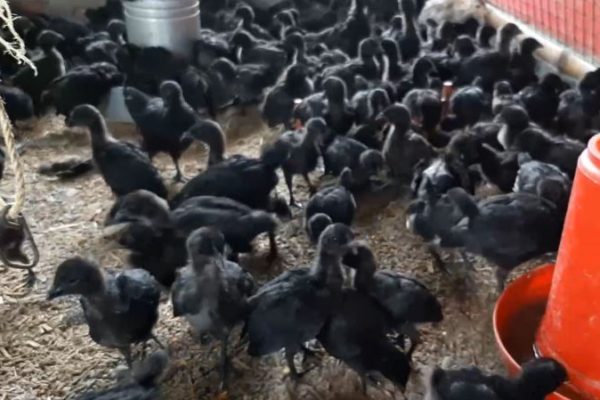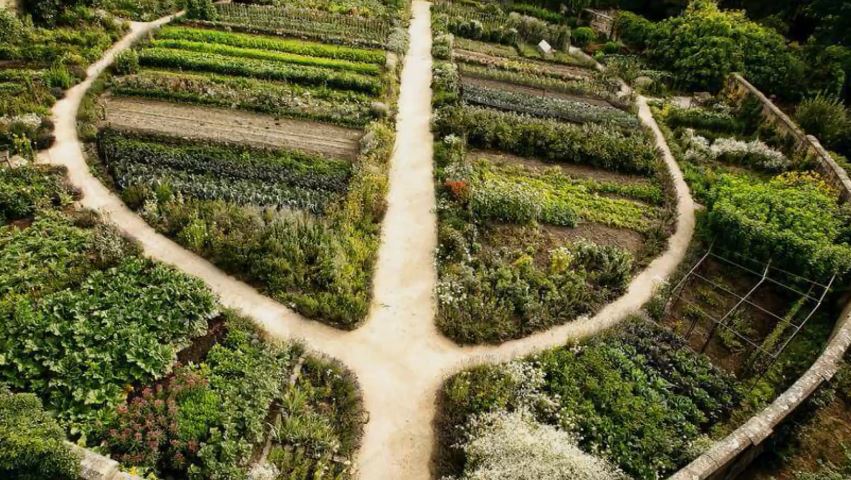
If you’re looking for a more sustainable way to farm, permaculture Farming may be the answer. Permaculture is a type of agricultural Farming that focuses on creating self-sustaining ecosystems. This type of farming is becoming more and more popular, as people are looking for ways to reduce their environmental impact. In this blog post, we will discuss the basics of permaculture farming, and how you can get started!
What is permaculture farming :
Permaculture is a type of agriculture that focuses on creating self-sustaining ecosystems. This means that permaculture farms are designed with the natural systems found in nature. For example, permaculture farms may use principles such as water catchment, companion planting, and using natural pest control methods.
In this pest control method, onion or marigold trees are planted among other trees to control insects. Insects fly away with the pungent smell of onions and die after being attracted to the yellow color of marigolds.
Permaculture farms can be used to grow a wide variety of different crops. However, permaculture farmers often focus on growing food crops, as this is one of the most efficient ways to use permaculture principles.
The benefits of permaculture farming over traditional agriculture:
There are many benefits of permaculture farming over traditional agriculture. One of the main benefits is that permaculture farms are more sustainable. This is because they use fewer resources, and they have a lower impact on the environment.
Permaculture farms can also be more productive than traditional farms. This is because they are designed to be more efficient, and they often use techniques such as companion planting.
Another benefit of permaculture farming is that it is more resistant to chemicals. This is because permaculture farms are designed with natural ecosystems. In nature, many different creatures help to keep the ecosystem in balance.
Permaculture farms also tend to produce less pollution. This is because they use no chemicals, and they often use alternative methods of natural system.
Permaculture farms can also help improve environmental conditions. This is because they help to increase the amount of biodiversity on the farm. They can also help to improve soil quality, and they can reduce the amount of water that is needed for irrigation.
How to get started with permaculture farming:
If you’re interested in permaculture farming, there are a few things you can do to get started. One of the best ways to learn about permaculture is to find a permaculture farm near you and take a tour. This will give you a chance to see permaculture in action and ask any questions that you may have.
Once you have a good understanding of permaculture, you can start applying it to your own farm. You may want to start with a small project. As you become more experienced, you can start to apply more permaculture principles to your farm.
There are many resources available to help you get started permaculture farming. With a little bit of research, you can learn everything you need to know about permaculture and how to apply it to your Own farm. Also many online resources available for learning this farming system.
The future of sustainable agriculture:
As the world’s population continues to grow, it is becoming increasingly important to find sustainable ways of producing food. Agriculture is one of the most resource-intensive industries, and traditional methods of agriculture are not sustainable in the long term. This is why permaculture farming is seen as the future of sustainable agriculture. Permaculture farms can also be more productive than traditional farms. This is because they are designed to be more efficient, and they often use techniques such as companion planting.
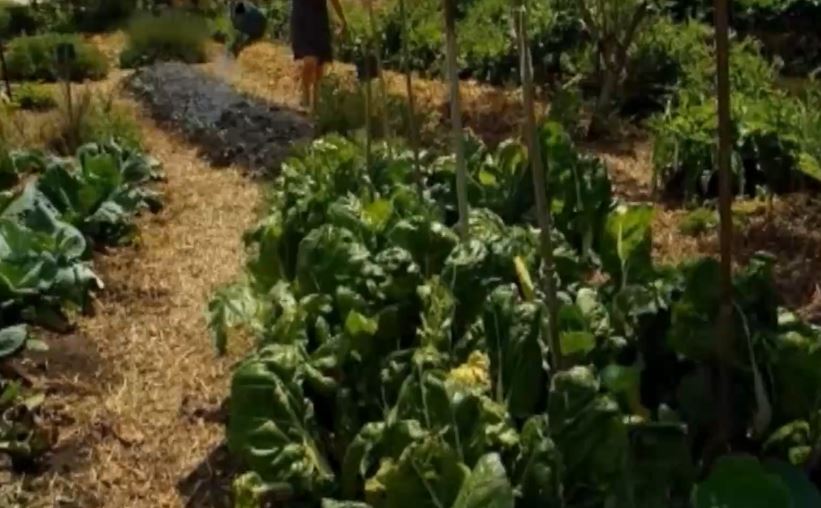
Check out these :How to Grow and Care Portulaca Plants For Portulaca Flower Farming
Resources for further learning about permaculture farming:
If you’re interested in learning more about permaculture farming, there are many resources available. Here are a few of the best:
The Permaculture Research Institute – The Permaculture Research Institute is a great resource for learning about permaculture. They offer online courses, as well as an annual permaculture design course.
Permaculture Principles – Permaculture Principles is a website that offers information about permaculture, as well as resources for getting started with permaculture farming.
Permaculture Farm Network – The Permaculture Farm Network is a network of farms that practice permaculture. They offer tours, internships, and events that are open to the public.
There are many other great resources available for learning about permaculture farming. With a little bit of research, you can find everything you need to get started.
The Advantages of Permaculture Farming:
There are many advantages of permaculture farming. One of the main advantages is that it is more sustainable than traditional agriculture. This is because permaculture farms use fewer resources, and they have a lower impact on the environment.
Another advantage of permaculture farming is that it can be more productive than traditional farms. This is because permaculture farms are designed to be more efficient, and they often use techniques such as companion planting.
Disadvantages of permaculture Farming:
There are a few disadvantages of permaculture farming. One of the main disadvantages is that it can be expensive to get started. This is because you need to purchase materials and equipment, and you may need to hire someone to help you with the design and construction of your farm.
Another disadvantage of permaculture farming is that it can be time-consuming to maintain. This is because you need to regularly weed and mulch your garden, and you may need to do other tasks such as pruning and harvesting.
Conclusion:
Permaculture farming is the future of sustainable agriculture. It is more sustainable than traditional agriculture, and it can be more productive. There are a few disadvantages, but the advantages outweigh the disadvantages. If you’re interested in sustainable agriculture, permaculture farming is a great option.
FAQ:
Q: What is permaculture farming?
A: Permaculture farming is a type of sustainable agriculture that uses fewer resources and has a lower impact on the environment.
Q: What are the advantages of permaculture farming?
A: The main advantages of permaculture farming are that it is more sustainable than traditional agriculture, and it can be more productive.
Q: What are the disadvantages of permaculture farming?
A: The main disadvantages of permaculture farming are that it can be expensive to get started, and it can be time-consuming to maintain.
Q: Is permaculture farming the future of sustainable agriculture?
A: Yes, permaculture farming is the future of sustainable agriculture. It is more sustainable than traditional agriculture, and it can be more productive.
Q: Where can I learn more about permaculture farming?
A: There are many resources available for learning about permaculture farming. The Permaculture Research Institute, Permaculture Principles, and the Permaculture Farm Network are all great places to start. With a little bit of research, you can find everything you need to get started. Permaculture is the future of sustainable agriculture, and it is a great way to produce food more sustainably.
